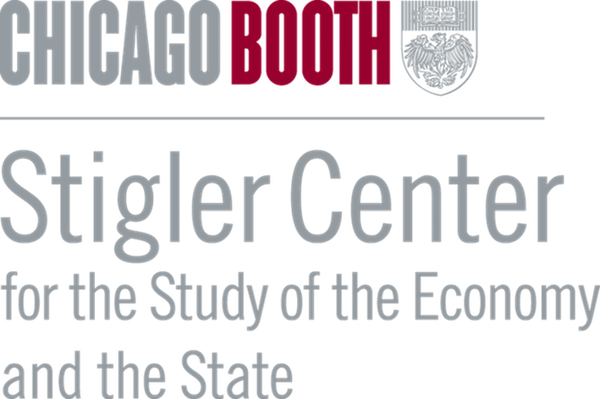Is pursuing a PhD a worthwhile financial investment? In new research, Dwayne Benjamin, Boriana Miloucheva, and Natalia Vigezzi compare earnings of PhD graduates to other degree holders, highlighting that the high opportunity costs of pursuing a PhD aren’t always worth it.
Graduate students are essential to the life of a research university: They teach undergraduates, assist with research, energize scholarly communities, and carry forward their disciplines. Faculty routinely advocate for more graduate students, not fewer.
But is a graduate education, especially to the doctoral level, good for the students themselves? And are universities, in their graduate planning and funding models, sufficiently responsive to labor market signals or to the information needs of prospective PhD students?
These questions are not new. In the post-war era, American academics William Bowen and Julie Ann Sosa highlighted the disconnect between future labour market opportunities and current doctoral enrolments. In their case, the perceived risk was of too few PhD students and a resulting shortage of faculty—a concern that seems quaint today. Their broader point remains: doctoral enrolment decisions are often unmoored from long-term labour market demand. On one hand, capable students weigh the merits of pursuing graduate study; on the other, institutions shape their cohorts through program design, funding structures, and admissions criteria. Outcomes for students remain poorly understood, and the information available to both sides to guide their decisions is limited.
We approach this as a transparency challenge: what information would a student need to make an informed decision about pursuing a PhD, and how does that compare with what is typically available? In a recent study, we set out to provide systematic evidence on the labor market outcomes of Canadian PhD graduates. Canada differs from the United States in certain institutional respects (a more formal expectation of a master’s degree prior to PhD entry, for example), but the broad dynamics of academic labor markets and graduate funding systems are similar enough that we expect many of our findings to resonate beyond Canada.
We use two complementary data sources: a linked administrative dataset connecting education records and tax filings, and population census data covering multiple cohorts over a 30-year period spanning 1991 to 2021. This allows us to track short-term and lifecycle earnings, both for those who complete a PhD and for those who enroll but do not finish.
Crucially, we embed our narrative in a counterfactual framework. Rather than treating PhDs as a standalone group, we benchmark their outcomes against relevant alternatives: those who stop at a bachelor’s degree, those who complete a master’s, those who earn professional degrees (MBAs, JDs, MDs), as well as those who enter PhD programs but exit without completing. This helps separate the returns to the degree itself from broader selection effects.
Our key findings:
1. The returns to a PhD have declined over time, particularly for men. Earlier cohorts of doctoral graduates enjoyed stronger earnings relative to their peers than more recent ones. Over the past 30 years, the earnings premium associated with a PhD has fallen by roughly 15 percentage points. By 2016, men were earning no more—or even slightly less—than their bachelors counterparts, while for women, returns had diminished to roughly break-even. The economic payoff to doctoral training has weakened substantially, reflecting a tightening academic job market and limited earnings growth outside academia.
2. Academic jobs still pay well, but they are increasingly rare. Those who secure tenure-track positions earn significantly more over the life cycle than peers in other sectors, with most of the premium after age 50. Yet the odds of landing such positions have declined from about 35% to 25%. The result is a labor market that resembles a tournament: high rewards for a shrinking number of winners.
3. Non-completion carries real penalties. We follow a cohort of new PhD students over ten years, roughly 30% of whom do not complete their degree within that period. Among this group, those who leave in the first year and subsequently accumulate labour market experience fare about as well in the short run as those who eventually graduate. Those who leave later fare worse: they have neither substantial labour market experience nor a PhD to show for their efforts. More precisely, students who withdraw after four or more years earn roughly 20% less in the short run than those who leave in their first year, incurring a double penalty of lost experience and no credential. Neither field of study nor institutional rank offsets these penalties in the short run. This underscores the importance of early, informed decision-making and viable off-ramps.
4. Gender matters. Although average returns for women have been more stable than for men, a substantial earnings gap persists. Across most of their careers, women with PhDs earn roughly 20 to 25 percent less than men with PhDs and 20 to 30 percent less than men with Master’s degrees, with the gap narrowing only late in the working life. These disparities suggest that even as formal academic opportunities have equalized, PhD experience is gendered in complex and persistent ways.
These patterns raise questions not only about individual decision-making, but also about institutional incentives. Universities rely on graduate students to deliver core educational and research functions, yet institutional planning often treats graduate education as an input rather than an outcome-driven process. Budget models rely on undergraduate tuition to subsidize graduate stipends, teaching assistantships, and faculty supervision. This structure encourages continued (or growing) PhD enrollment, even when outcomes deteriorate. That said, the goal is not to dissuade students from pursuing doctoral study, but to ensure that they, and the institutions that train them, are making informed, accountable choices aligned with the realities of today’s labor market.
Some institutions have begun to take ownership of this problem. At our own university, the University of Toronto, the “10,000 PhDs” project (now encompassing over 15,000 alumni) and a new Doctoral Degree Completion dashboard aim to provide a clearer picture of career outcomes and progression. The Coalition for Next Generation Life Science is another example of transparency efforts in graduate education that focuses on sharing career statistics of global graduate programs, particularly in the sciences. Still, in Canada more broadly, systematic outcome reporting remains limited. At the undergraduate level, the U.S. offers an instructive comparison. Tools like the College Scorecard provide program-level earnings data for prospective undergraduates, however imperfect. Canada has no such system. Our research shows what becomes possible when administrative and tax data are linked: a clearer picture of who thrives, who struggles, and where the hidden costs lie.
Of course, transparency alone is not enough. Dashboards and websites will not solve the problem unless they are actively used by decision-makers and embedded in how programs are designed and governed. While we frame our analysis in terms of counterfactuals available to prospective PhD students, the more urgent audience may be faculty leadership in graduate units. After all, the irony of our findings is that professorships are becoming scarcer, while the earnings gaps between faculty and other PhD graduates are widening—a misalignment exacerbated by tenure structures, the end of mandatory retirement, and declining undergraduate enrollments driven by long-run demographic trends unlikely to reverse.
Senior faculty now remain active longer, which allows them to enjoy the financial and intellectual returns of their PhD over an extended horizon. But this longevity comes at a systemic cost: slower turnover within departments reduces the opportunities for current PhD graduates to enter the academic ranks. Compounding this, declining undergraduate enrollments further shrink the demand for new faculty positions, as fewer students translate into fewer teaching needs. These trends point to a growing disconnect between how universities structure academic labour markets and how public agencies continue to invest in PhD training—an issue that extends beyond institutional planning.
Public policy plays a parallel role. Canadian granting agencies fund thousands of doctoral students annually, yet few mechanisms exist to evaluate the long-term payoff of this investment, particularly outside academia. If the economic value of the PhD is increasingly concentrated in a stagnant academic sector, what does that say about Canada’s demand for high-skill talent and about how doctoral education is positioned as a public good?
Finally, we caution against overcorrecting through well-intentioned professional development programming. These initiatives have merit: they at least acknowledge the importance of connecting doctoral training to downstream labor market realities, and they help students explore a broader set of career pathways. But the message should not become “do a PhD, and one way or another it will be financially worthwhile.” Our findings suggest that is simply not true for many graduates. The opportunity costs of losing out on potential earnings or other educational pursuits are real, and the returns highly uneven. A recent New York Times article even noted that economics PhDs, once considered among the most job-secure, are now facing a more competitive and uncertain academic job market.
Doctoral education remains a public good, and PhD graduates contribute to society in countless ways. But if institutions and governments want to sustain and improve doctoral training, they must take seriously the information problem at its heart. Transparency is not a silver bullet, but it is a necessary condition for aligning expectations, designing better programs, and supporting the next generation of scholars, teachers, and professionals.
Author Disclosure: The author reports no conflicts of interest. You can read our disclosure policy here.
Articles represent the opinions of their writers, not necessarily those of the University of Chicago, the Booth School of Business, or its faculty.
Subscribe here for ProMarket’s weekly newsletter, Special Interest, to stay up to date on ProMarket’s coverage of the political economy and other content from the Stigler Center.






